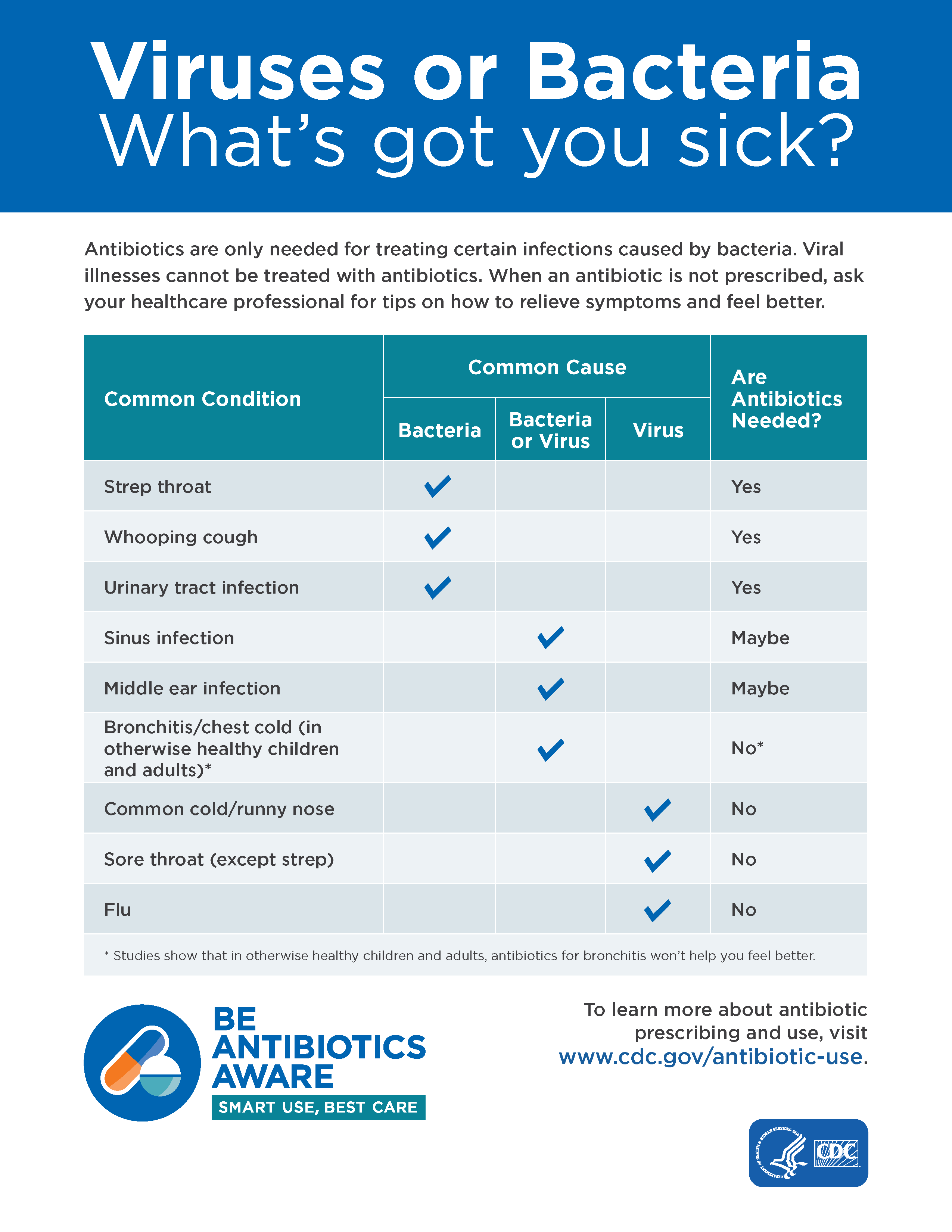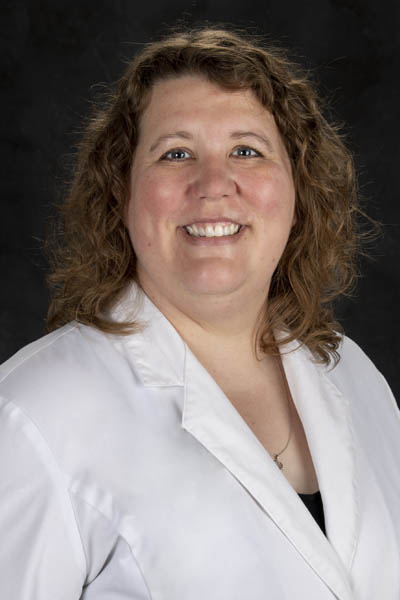
Antibiotics revolutionized medicine after the discovery of penicillin in 1928, saving millions of lives by fighting off bacterial infections at home, in hospitals and on the battlefield. Even today, they remain one of the most important tools at a provider's disposal.
But antibiotics aren’t always the right choice. Too often, people take them when they shouldn’t — the Centers for Disease Control and Prevention (CDC) says that in the U.S., that is at least 28% of the time. Mostly, that’s because people take an antibiotic for a virus. Antibiotics do absolutely nothing for a virus, no matter how awful that cold or flu feels.
"Misusing antibiotics isn’t just a waste of money. The more we put them in our bodies, the more ways bacteria figure out how to get around them — a problem called antibiotic resistance that is considered one of the greatest challenges in medicine today," explains Nikki Newman, PA-C, board-certified physician assistant who sees patients at Beaufort Memorial Lowcountry Medical Group Primary Care. "One reason is that the public has misconceptions about how and when antibiotics should be used."
Read More: Antibiotics Not Always the Best Answer
Test Your Antibiotic Smarts
False. While one sinus infection might warrant a prescription, the next might be less severe and clear up on its own.
"Antibiotics are only useful for treating certain infections caused by bacteria," Newman says. "They often won’t help some of the more common bacterial infections including most cases of bronchitis, many sinus infections and some ear infections."
Unless antibiotics are truly needed, it is better to speak with your provider about the best way to feel better while your body fights off a virus. Pain relievers, fever reducers, saline nasal spray or drops, warm compresses, liquids and rest can often relieve symptoms.
True. When a person takes antibiotics, good germs that protect against infection are destroyed along with the harmful bacteria causing illness.
Common side effects of antibiotics can include rash, dizziness, nausea, diarrhea or yeast infections. More serious side effects include Clostridioides diffcile infection (also called C.diffcile or C. diff), which causes diarrhea that can lead to severe colon damage and death. People can also have severe and life-threatening allergic reactions.
False. Most respiratory tract infections are viral, and they take two weeks or so to go away.
If you don’t have a bacterial infection, there’s no point in taking an antibiotic. However, taking antibiotics as a preventive measure in certain circumstances, such as before surgery, is helpful because of the increased risk of infection.
False. When germs like bacteria and fungi develop the ability to defeat the drugs designed to kill them it is a concern for everyone, including the young and healthy. As antibiotics lose their effectiveness, we lose the ability to treat infections. Drug-resistant forms of tuberculosis, gonorrhea and staph infections are just a few of the dangers we now face.
According to the CDC, more than 2.8 million antibiotic-resistant infections occur in the U.S. each year, and more than 35,000 people die as a result.
Since people who are sick or in a weakened state are more susceptible to germs, historically superbugs have been more of a concern in health care settings. Unfortunately, there are now strains of superbugs, like methicillin-resistant Staphylococcus aureus (MRSA), out in the general public. These bugs can infect anyone, even healthy people.
True, most of the time. "Stopping before an antibiotic has time to do a thorough job can contribute to lingering germs mutating and becoming resistant to treatment," Newman says. "Never save your antibiotics for later use or share them with family or friends."
If you start an antibiotic one day and feel fantastic the next talk to your doctor about whether or not you can stop taking your prescription.
Taking antibiotics only when needed helps keep us healthy now, helps fight antibiotic resistance, and ensures that these life-saving drugs will be available for future generations.
Talk with your healthcare professional if you have any questions about your antibiotics, including how they could interact with other medications you are taking, or if you develop any side effects.
False. In virtually every case, generic versions of antibiotics are just as effective as the original brand name.
Acording to the U.S. Food & Drug Administration (FDA), all FDA-approved generic medications use the same active ingredients as the brand-name and must go through the same rigorous FDA approval process to ensure they have the same clinical benefit and are as safe and effective as the brand-name medicines they duplicate. Differences in size, shape and color that do not impact how medications work are allowable.
Generic medicines tend to cost less than their brand-name counterparts because the manufacturers do not have to repeat animal and clinical (human) studies that were required of the brand-name medicines to demonstrate safety and effectiveness.
When you’re feeling under the weather, Beaufort Memorial has several options to get care quickly. If you have questions about taking an antibiotic, talk to your prescribing physician or pharmacist.

Wonder what we’re doing to help combat antibiotic resistance?
Beaufort Memorial has an antibiotic stewardship team lead by pharmacists and infection prevention specialists that provides guidance on proper use of antibiotics. Our team studies patterns of antibiotic resistance in patients’ bacteria tested at our labs and publishes guidelines on the most appropriate antibiotics to give for common infections. The team also audits antibiotic use and provides feedback and education on optimizing antibiotic selection, adverse reactions from antibiotics and antibiotic resistance.
Updated: April 2025

